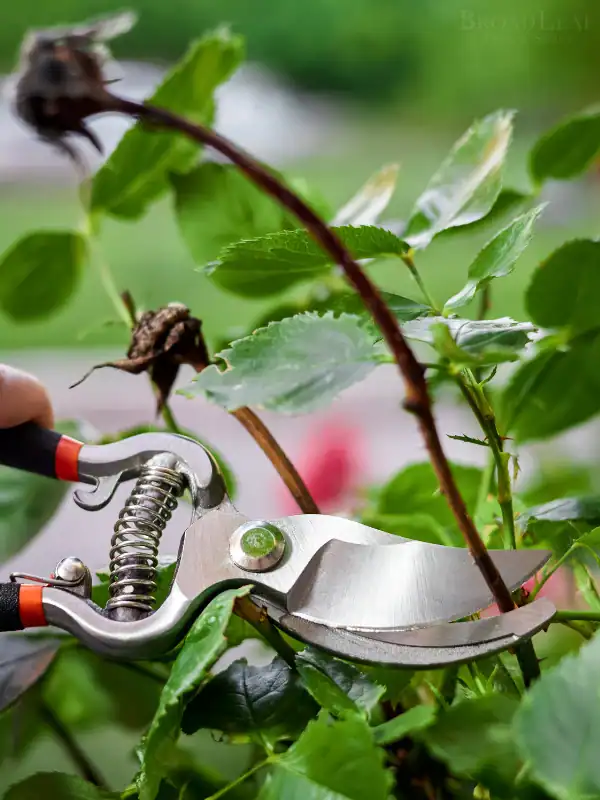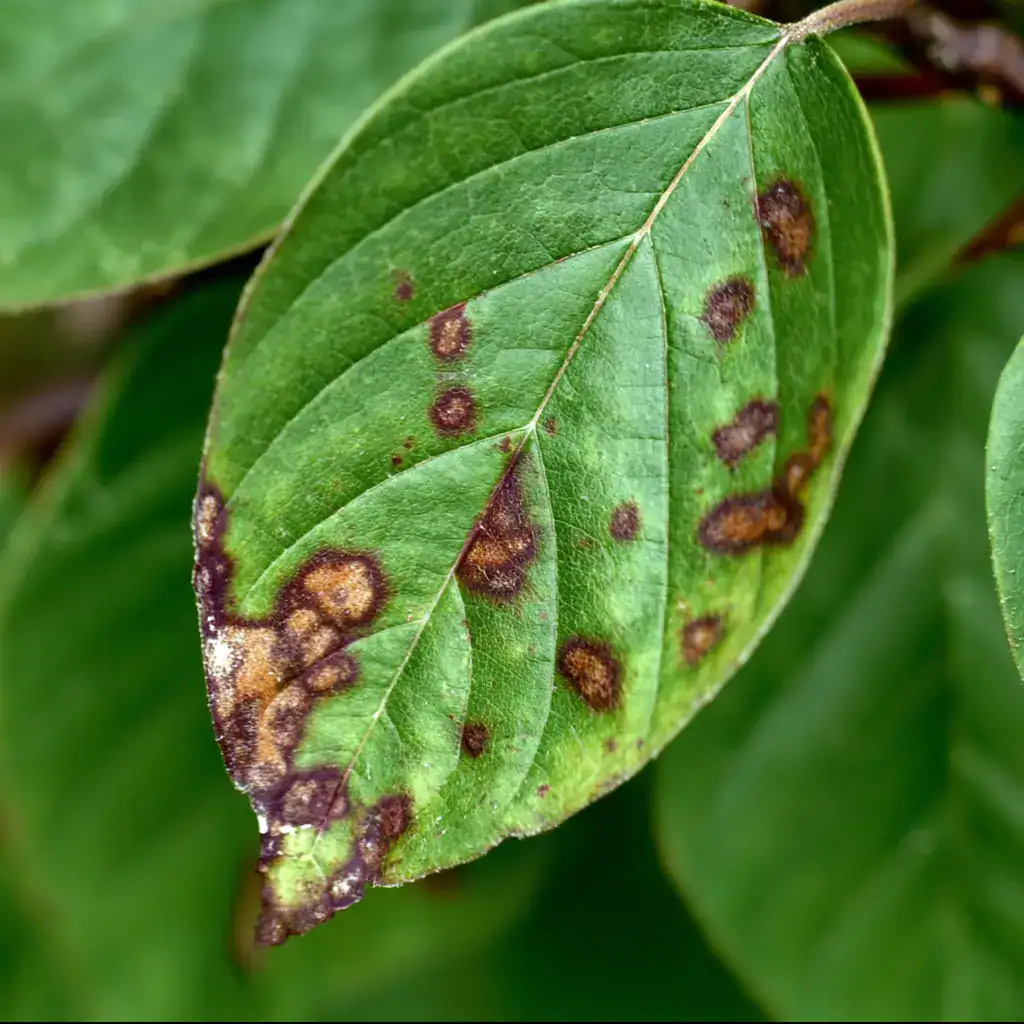A tree can live for decades—sometimes even centuries—but when it begins to decline, it can quickly shift from a landscape centerpiece to a serious hazard. Dead trees often give subtle warning signs before major failure occurs, and identifying them early can prevent costly property damage or even injury.
At Broadleaf Tree & Shrub, our Durham-area team understands that tree removal is a last resort, not a first step. Join us as we explore how to determine trees health, from underlying illnesses to dead twigs or tree trunk and internal decay of root systems. Knowing what to look for in a dead or sick tree helps homeowners in Durham, North Carolina make informed decisions about whether its time to call in a professional tree removal company.
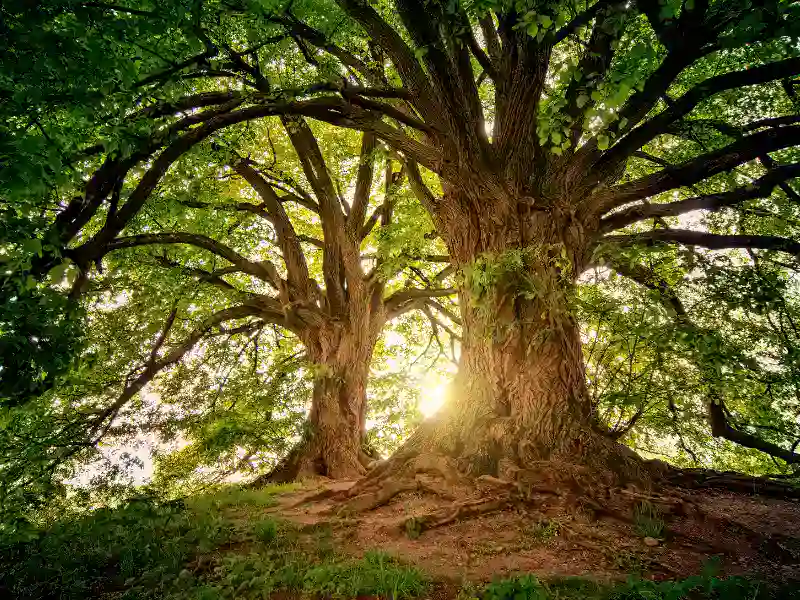
Signs of a Dead Tree You Can Spot in Minutes
Homeowners can often identify clear signs that a tree is dead or dying with just a few minutes of observation. While these checks don’t replace an inspection completed by a certified arborist, they can reveal whether your tree’s health is in jeopardy and help you decide if professional evaluation is necessary.
The scratch test is one of the simplest ways to check a tree’s vitality:
Do a Quick Test of the Bark: Use your fingernail or a small knife to gently scrape the bark of a twig. A healthy tree will show a green underneath layer, meaning there’s still active nutrient flow.
Compare Multiple Twigs: If several twigs are brown and dry beneath the bark, the tree may be dead or suffering severe stress. Multiple failed scratch tests across the canopy are a sure sign that tree death is occurring.
Testing flexibility of the tree’s branches can quickly separate signs of of a living, healthy tree from dead or dying wood:
Check for Flexible Branches: A healthy tree’s smaller branches bend slightly under pressure and return to position.
Identify Brittle Branches: Brittle branches snap easily and often feel hollow, suggesting the tree is dying and may already have internal decay.
A tree’s canopy reveals its overall vitality and nutrient flow:
Watch for Bare Branches: If large sections of the canopy lack leaves during the growing season, that’s a red flag of widespread dieback.
Note Dead Branches: Dead branches clustered near the top or outer edge indicate the tree can no longer transport enough nutrients.
The tree’s bark is its protective layer, and changes here often appear before full internal decline of the tree’s system:
Look for Bark Peeling: Some bark shedding is natural, but deep bark peeling and missing sections of tree bark suggest internal decay.
Check for Vertical Cracks: Long cracks or open wounds weaken structural integrity and may invite fungal growth.
Examine the Tree Bark Closely: If the bark falls away easily or doesn’t regrow, that’s a clear indicator that the tree is dying.
Healthy tree roots are essential for a tree’s stability. Problems here often explain why a tree is leaning or failing:
Watch for Heaving Soil: Raised ground or shifting soil near the tree’s base can mean the root system is losing grip.
Consider Poor Drainage: Consistently wet ground deprives tree roots of oxygen, leading to root damage that can’t be reversed.
High-Risk Hazards That Point Toward Tree Removal
Some warning signs don’t just mean decline—they mean danger. When a tree’s stability or strength is compromised, professional tree removal may be the only safe option. These conditions can worsen quickly, especially after heavy rain or wind.
Leaning Tree or Shifting Root Plate
Leaning Tree or Shifting Root Plate
Trunk, Bark, and Base Failures
Trunk, Bark, and Base Failures
Canopy Breakage and Falling Wood
Canopy Breakage and Falling Wood
A History of Severe Stress
A History of Severe Stress
When a Dying Tree Can Be Saved
Not every tree showing signs of stress is beyond help. Some species can rebound with proper care and environmental improvements. The key is identifying whether the damage is reversible or if decay has compromised the tree’s structural integrity.
If damage is localized—such as a small section of bark loss, isolated dead branches, or minor fungal growth—corrective tree pruning and improved drainage solutions may help. Professional tree care can address nutrient flow, improve soil quality, and restore vigor before infection spreads to trees surrounding it.
Deciduous trees naturally shed leaves seasonally, but persistent dead leaves, brittle wood, and bark loss during the growing season are cause for concern. Chronic thinning across multiple seasons usually signals a dying tree, not just temporary stress.
A certified arborist trained by the International Society of Arboriculture can distinguish between treatable decline and tree death. Broadleaf Tree & Shrub applies ISA-based best practices to diagnose issues accurately and recommend next steps for your property.
Root and Ground Clues of a Dead or Dying Tree
The condition of the ground and roots tells as much about tree health as the canopy does. Because roots anchor the tree and absorb water and nutrients, any disruption can lead to a sudden collapse or long-term decline.
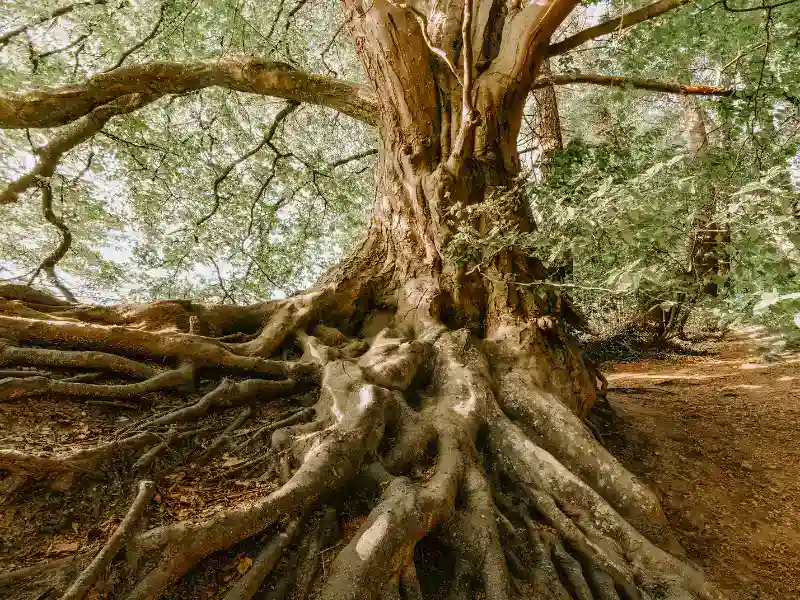
Common Red Flags in Roots
Exposed Surface Roots: Roots protruding from the ground can mean erosion or soil compaction, both of which threaten the tree’s stability.
Mushy Soil Around Roots: Persistent dampness suffocates the root system, encouraging rot and internal decay.
Driveway or Sidewalk Lift: When tree roots push up hardscapes, it often indicates structural imbalance or poor anchoring.
Trenching Near Roots: Any digging near a tree’s roots can sever key support lines and cause delayed deterioration over time.
How Our Experts Help Durham-Area Homeowners
Choosing the right tree removal company matters. Broadleaf Tree & Shrub’s certified team assesses every aspect of your tree’s condition—from the trunk and canopy to the root system and surrounding ground stability. We consider your property layout, nearby structures, and other trees to determine the safest and most cost-effective plan.
What You Can Expect
Safety-First Assessment: Our team evaluates the tree’s stability, structural integrity, and canopy health before recommending removal.
Transparent Options: If the tree can be saved through pruning or soil management, we’ll provide clear guidance on those next steps.
Minimal Disruption: We protect surrounding landscapes and hardscapes during all tree removal or maintenance work.
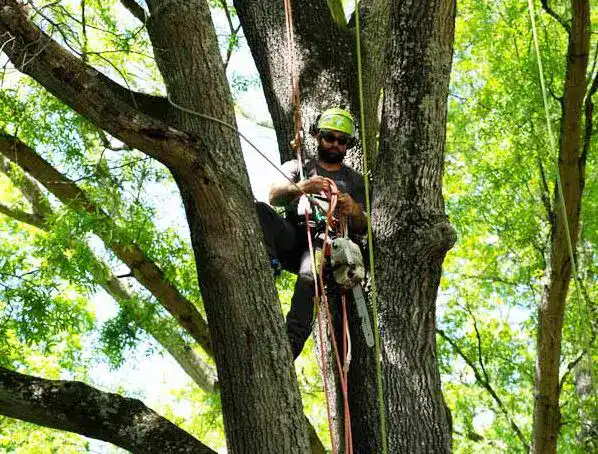
What are the most reliable signs a tree is dead?
When the scratch test fails across multiple twigs, bark is missing, and the canopy has widespread bare branches, these are strong indicators of tree death. Heaving soil or leaning roots make removal urgent.
Can a dying tree recover?
If issues are caught early—like limited bark peeling, mild root damage, or soil compaction—professional tree care may restore stability and growth.
Is peeling bark always a problem?
Not always, but if the bark peels off in large sheets with vertical cracks or reveals brittle wood underneath, it’s a warning sign that the tree is dying.
What if lightning strikes my tree?
Lightning strikes can cause internal damage invisible at first. Watch for new cracks, broken branches, or rapid canopy decline in the following months.
Will tree removal harm nearby landscaping projects?
Not when you work with the right experts. Broadleaf Tree & Shrub’s experienced and certified arborists uses careful planning and protective mats to minimize soil compaction and disturbance during tree removal or pruning.
Schedule a Consultation for Tree Inspection Today
If your tree is showing warning signs—dead branches, peeling bark, or a leaning trunk—don’t wait for the next storm to make the decision for you. The tree and plant health care professionals at Broadleaf Tree & Shrub can inspect your property and determine whether your tree can be saved.
Fill out the form below to schedule a consultation with our tree care experts today.
